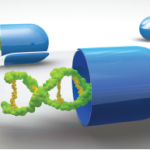Implications for Treatment
Similar to the variation in phenotypes found among the nine patients, the study also found variation in treatment response. Initial treatment for all patients included immunosuppressant medications and corticosteroids, regardless of disease severity, which ranged from mild and limited to the skin to severe or lethal (see Table 1).
| Severity of Disease | Response to Treatment |
|---|---|
| Mild (n=2) Primarily skin disease | • Both patients responded well to initial treatment. • One patient required intravenous cyclophosphamide at 6 months for ongoing disease. |
| Moderate to severe (n=5) Neurological symptoms, renal disease, ulcerating skin disease | • Two patients responded well to initial treatment. • One patient switched from initial treatment to a etanercept after 1 month and had inactive disease with no corticosteroid use at 6 months. • One switched to mycophenolate mofetil at 6 months due to ongoing disease activity. • One switched to intravenous cyclophosphamide at 3 months due to ongoing disease activity but achieved a stable response only after switching to etanercept 5 years after diagnosis. |
| Very severe (n=2; twins) Bowel perforations and hematologic disease; severe neutropenia, urosepsis | • One patient initially treated with corticosteroids alone was treated with etanercept after 1 year and died. • One patient responded well to initial treatment with corticosteroids and etanercept; relapsed at 4 months; underwent bone marrow transplant. |
According to the investigators, these varying results suggest that earlier diagnosis of DADA2 and the use of more effective treatments may improve treatment outcomes. “Even patients in our cohort with predominantly skin disease required treatment with immune-suppressing medications and corticosteroids,” say the authors in their study.2 “Earlier diagnosis of DADA2 in such patients may have prompted alternative, more effective treatments and less corticosteroid use.”
They also highlight the efficacy of etanercept in four patients, noting an excellent response in two patients.
Screening

Dr. O’Neil
Based on these results, the investigators point to the importance of screening children for DADA2 to identify disease early and initiate treatment promptly
and appropriately.
“Consider screening for deficiency of ADA2 in children with vasculitis rash, unclassified vasculitis, polyarteritis nodosa, or unexplained early-onset central nervous system disease with systemic inflammation,” says Dr. Morishita.
Dr. O’Neil also emphasizes the importance of early diagnosis. “Early onset disease with CNS involvement and systemic inflammatory features could be due to DADA2, and early diagnosis could lead to effective treatment with anti-inflammatory medication, including early use of TNF inhibitors, which can be life-saving,” she says. “Any child or adolescent with onset of PAN not due to an obvious cause like Streptococcus pyogenes infection or Crohn’s disease should be evaluated for DADA2.”
Mary Beth Nierengarten is a freelance medical journalist based in Minneapolis.
References
- Meyts I, Aksentijevich I. Deficiency of adenosine deaminase 2 (DADA2): Updates on the phenotype, genetics, pathogenesis, and treatment. J Clin Immunol. 2018 Jul;38(5):569–578.
- Gibson KM, Morishita KA, Dancey P, et al. Identification of novel adenosine deaminase 2 gene variants and varied clinical phenotype in pediatric vasculitis. Arthritis Rheumatol. 2019 Oct;71(10): 1747–1755.



